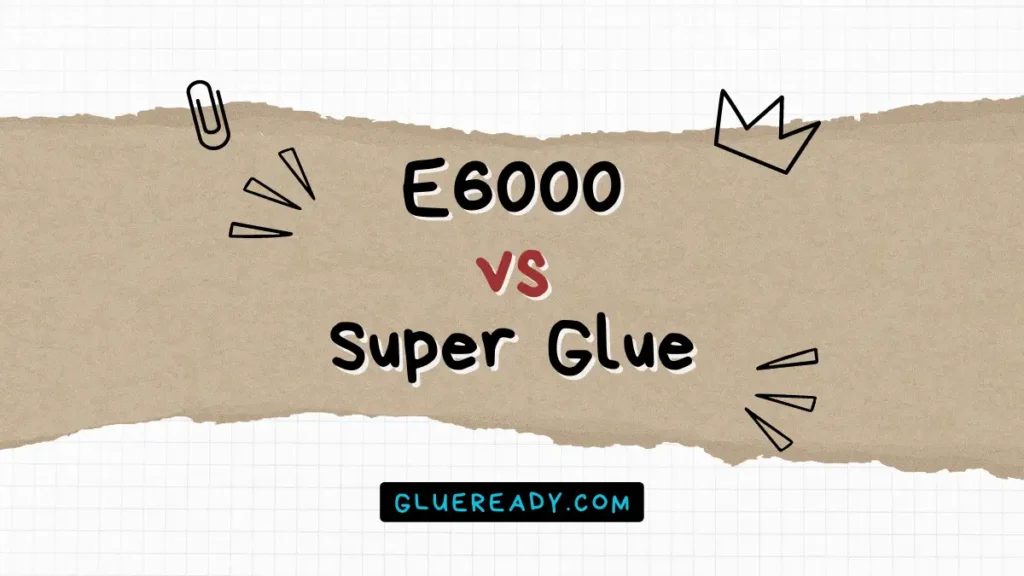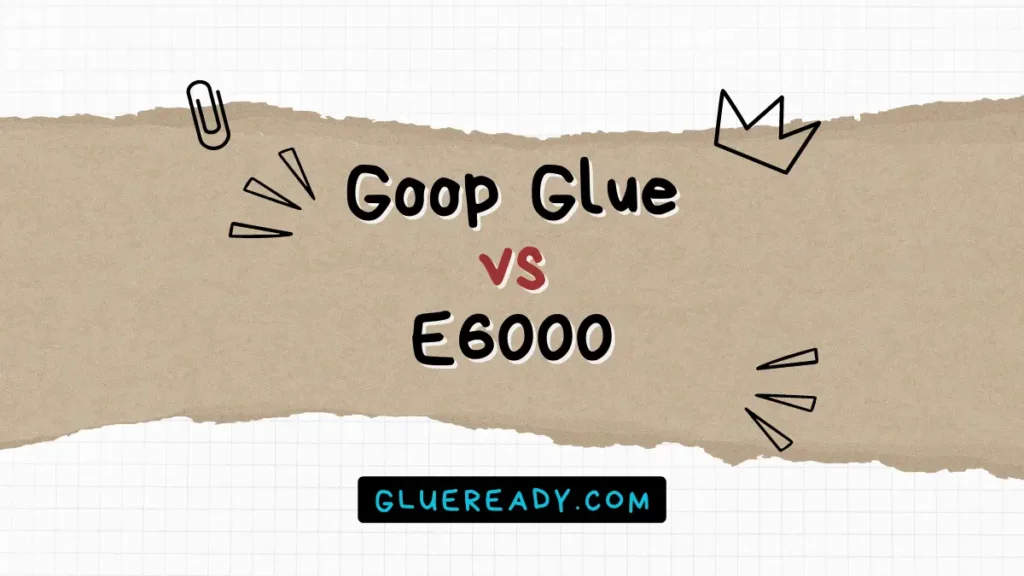E6000 vs E7000 | Detailed Comparison

E6000 and E7000 are two types of glue that are almost similar, but have some differences. E6000 is an adhesive that provides industrial strength, while E7000 is suitable for high elasticity.
E6000 and E7000 both work well to bond different surfaces. They have some differences, however, that make them more suitable for certain applications.
This article compares E6000 vs E7000 in terms of their properties and applications as well as their advantages and disadvantages.
What is E6000?
E6000 is a solvent-based adhesive that provides industrial strength and durability. It has a self-leveling feature that allows it to fill gaps and create a smooth surface.
It is flexible, resistant to chemicals, UV rays, and extreme temperatures, as well as water.
E6000 is a versatile adhesive that can be used to bond metals, leather, wood, vinyl, rubber, and more. This product is perfect for projects that need a permanent and strong bond.

What is E7000?
E7000 is a single-component epoxy adhesive with a high degree of elasticity and adhesion. It is suitable for porous or non-porous surfaces.
This adhesive can be used to bond textiles, leathers, PVC, woods, ceramics, glass and other materials.
This is the perfect bond for projects that are light in weight and require a precise, flexible bond.

E6000 vs E7000 Comparison
Here are some of the main differences between E6000 and E7000:
Strength
E6000 is stronger than E7000 and can hold heavier items or items that will be exposed to stress or pressure. E7000 is more flexible than E6000 and can absorb shocks or vibrations better.
E6000 is stronger and better for heavier items or items that will be exposed to extreme temperatures. It can withstand up to 350°F (177°C) and has a tensile strength of 3500 psi (pounds per square inch).
E7000 is more flexible and better for light items such as fabric or paper. It can withstand up to 176°F (80°C) and has a tensile strength of 2800 psi.
Elasticity
E7000 has better elasticity and adhesion for both porous and non-porous substances. It can stretch up to 900% without breaking or losing its bond. It is also more resistant to vibration and shock.
E6000 has less elasticity and adhesion for porous substances. It can stretch up to 600% without breaking, but it may lose its bond over time if exposed to moisture or humidity.
Drying time
E6000 dries faster than E7000 and can be cured in 24 hours. E7000 takes longer to dry and can take up to 48 hours to cure completely.
Application
E6000 is easier to apply than E7000 and can be squeezed directly from the tube. E7000 requires a needle tip applicator or a syringe to apply it accurately and avoid wastage.
E7000 has a thinner consistency and a precision tip that allows for a more controlled and precise application. It is easier to apply on small or delicate items such as jewelry, electronics, or textiles.
E6000 has a thicker consistency and a wider tip that allows for a more generous and even application. It is easier to apply on large or rough items such as metal, wood, or leather.
UV Resistance
E6000 is more resistant to UV rays, making it a better choice for outdoor projects. It can prevent yellowing and cracking due to sun exposure.
E7000 is less resistant to UV rays, so it may fade or deteriorate over time if used outdoors.
Odor
E6000 has a strong odor that may be unpleasant or harmful to some people. E7000 has a mild odor that is less noticeable or bothersome.
Safety
E6000 contains harmful chemicals that may cause skin irritation, eye damage, respiratory problems, or cancer if inhaled or ingested.
E7000 is more environmentally friendly and safer to use than E6000.
Which One to Use? E6000 or E7000?
E6000 or E7000? There is no clear answer. The type of project you have and the materials that you use will determine the best adhesive.
You can see in the article that E6000 and E7000 each have strengths and weaknesses which make them more or less suitable for specific types of projects.
E6000 is the best choice for those who want an adhesive that will last a long time and can withstand high temperatures and UV light. This adhesive is ideal for projects that require heavy materials, such as wood, metal or leather, or that are subjected to harsh conditions.
E7000 is the perfect choice for those who want an adhesive that can be used to bond various materials better. It is ideal for projects using light materials, or materials that require more precision, like fabric, paper or electronics.
It is best to test both adhesives on a small surface before using them for your final project. Your preference may be influenced by your comfort and experience.
How Do You Use E7000 Glue on Fabric?
To use E7000 glue on fabric, you need to follow these steps:
- Prepare the fabric and the glue. Make sure the fabric is clean and dry. The fabric should be cut to the desired size and shape. Shake the glue tube well and remove the cap.
- Apply the glue to the fabric. To apply glue to the fabric, use a needle-tip applicator or a syringe. You can also use a toothpick or a pin to spread the glue evenly. Avoid applying too much glue, as it may seep through the fabric or create lumps.
- Press the fabric together. If you are gluing two pieces of fabric together, align them carefully and press them firmly. You can also use clamps, pins, or tape to hold them in place. If you are gluing fabric to another material, such as metal, wood, or glass, make sure the surface is clean and dry before applying the glue.
- Let the glue dry and cure. After 3 to 6 minutes, E7000 glue will be dry and will cure completely in 24 to 48 hours. Do not move or wash the fabric until the glue is fully cured. Using a hairdryer or a heat gun can speed up the drying process, but be careful not to burn the fabric.
- Enjoy your project. Once the glue is cured, you can use or display your project as you wish. E7000 glue is waterproof and flexible, so it can withstand washing and wearing. However, you should always test a small area first before washing or ironing the fabric.
Read More: E6000 vs Epoxy
Frequently Asked Questions about E6000 and E7000
Is E6000 Stronger Than Super Glue?
E6000 is stronger than super glue in terms of tensile strength and shore hardness. It can also withstand higher temperatures and UV rays better than super glue.
What is E7000 Glue Used For?
E7000 glue is a multi-purpose adhesive that can be used for various types of materials, such as cloth, fiber, diamond, acrylic, metal, glass, ceramic, and more.
Final Thoughts
If you need a strong and durable glue that can withstand harsh conditions and bond heavy items, then E6000 is the better choice for you.
E7000 is a better option if you want a versatile and flexible glue that can be used to bond various types of materials, repair small items or decorate them.
Test the glue first on a small piece of paper before using it for your project. This will ensure compatibility, and prevent any damage.
This article should help you to compare E6000 vs E7000 glues, so that you can choose the right glue for your project.







I am using E6000 with out great success, gluing glass to metal (for night lights). I just ordered some E7000 to try instead. Maybe the elasticity will help with the handling of night lights….????
Yes, you are right.